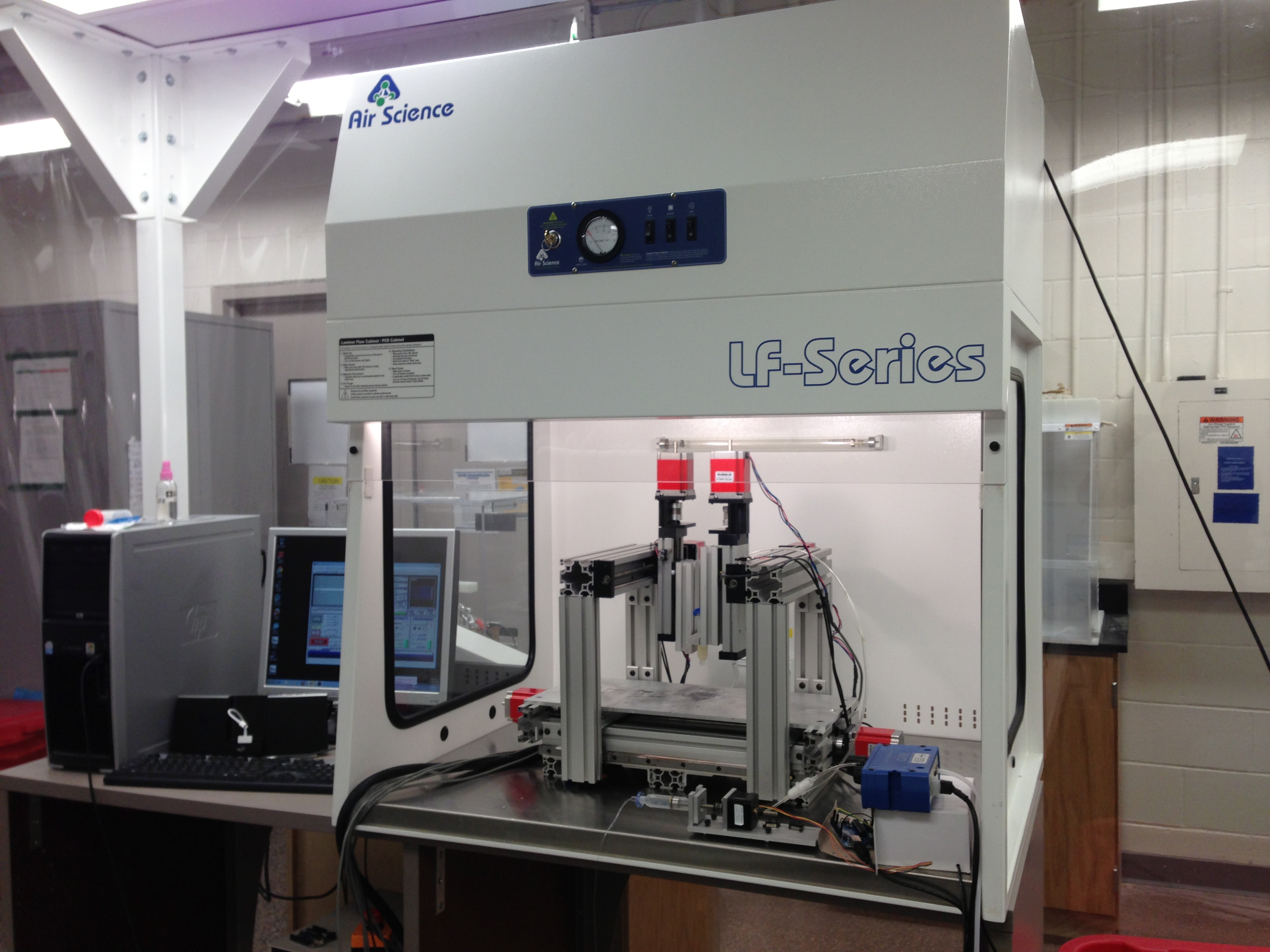Science Note/New Organs On Demand
Air Date: Week of April 12, 2013

The multi-arm bio-printer (photograph: Yin Yu, University of Iowa)
This month, University of Iowa researchers announced a breakthrough in bioengineering. In this week’s Note on Emerging Science, Naomi Arenberg reports that the first multi-arm bio-printer might be able to create new organs.
Transcript
CURWOOD: It's Living On Earth, I'm Steve Curwood. Just ahead, tides ebb and flow like clock-work twice a day - but that doesn't ensure smooth sailing for tidal power. First here's this note on emerging science from Naomi Arenberg.
[MUSIC]
ARENBERG: A breakthrough in printer technology could make it possible for scientists to manufacture human organs in the laboratory. These bio-printers rely on mechanisms that resemble the old dot-matrix system, except that, instead of spraying dots of traditional ink, they spray “bio-ink.” That’s a solution of living cells and a thick liquid biomaterial that helps the cell grow into living tissue, once printed onto a surface. A container of this “bio-ink” is fastened to the end of a printer “arm,” which scans back and forth to print a row of dots on each pass.
The bio-printer is not a new idea, but now a new design by University of Iowa engineers enables specific tissue cells to be printed alongside blood vessel cells so fast, it’s almost simultaneous. This means that those tissue-specific cells can grow and develop with their own blood vessels, ensuring a flow of nutrients to the fragile, young tissue and hastening its development.
What makes this possible is a double-arm printer. Until now, printers had only one arm, which laid down only a single line of bio-ink. The research team hopes to print human organs for transplant within five to 10 years. One of the first of these could be a pancreatic organ that could be implanted anywhere in the body to regulate glucose level. Now that people are living longer, the demand for replacement organs is far out-pacing supply. Perhaps the laboratory will be able to help fill the gap.
That’s this week’s note on emerging science. I’m Naomi Arenberg.
Links
The University of Iowa’s newsletter about the bioprinter with a video
Living on Earth wants to hear from you!
Living on Earth
62 Calef Highway, Suite 212
Lee, NH 03861
Telephone: 617-287-4121
E-mail: comments@loe.org
Newsletter [Click here]
Donate to Living on Earth!
Living on Earth is an independent media program and relies entirely on contributions from listeners and institutions supporting public service. Please donate now to preserve an independent environmental voice.
NewsletterLiving on Earth offers a weekly delivery of the show's rundown to your mailbox. Sign up for our newsletter today!
 Sailors For The Sea: Be the change you want to sea.
Sailors For The Sea: Be the change you want to sea.
 The Grantham Foundation for the Protection of the Environment: Committed to protecting and improving the health of the global environment.
The Grantham Foundation for the Protection of the Environment: Committed to protecting and improving the health of the global environment.
 Contribute to Living on Earth and receive, as our gift to you, an archival print of one of Mark Seth Lender's extraordinary wildlife photographs. Follow the link to see Mark's current collection of photographs.
Contribute to Living on Earth and receive, as our gift to you, an archival print of one of Mark Seth Lender's extraordinary wildlife photographs. Follow the link to see Mark's current collection of photographs.
 Buy a signed copy of Mark Seth Lender's book Smeagull the Seagull & support Living on Earth
Buy a signed copy of Mark Seth Lender's book Smeagull the Seagull & support Living on Earth

